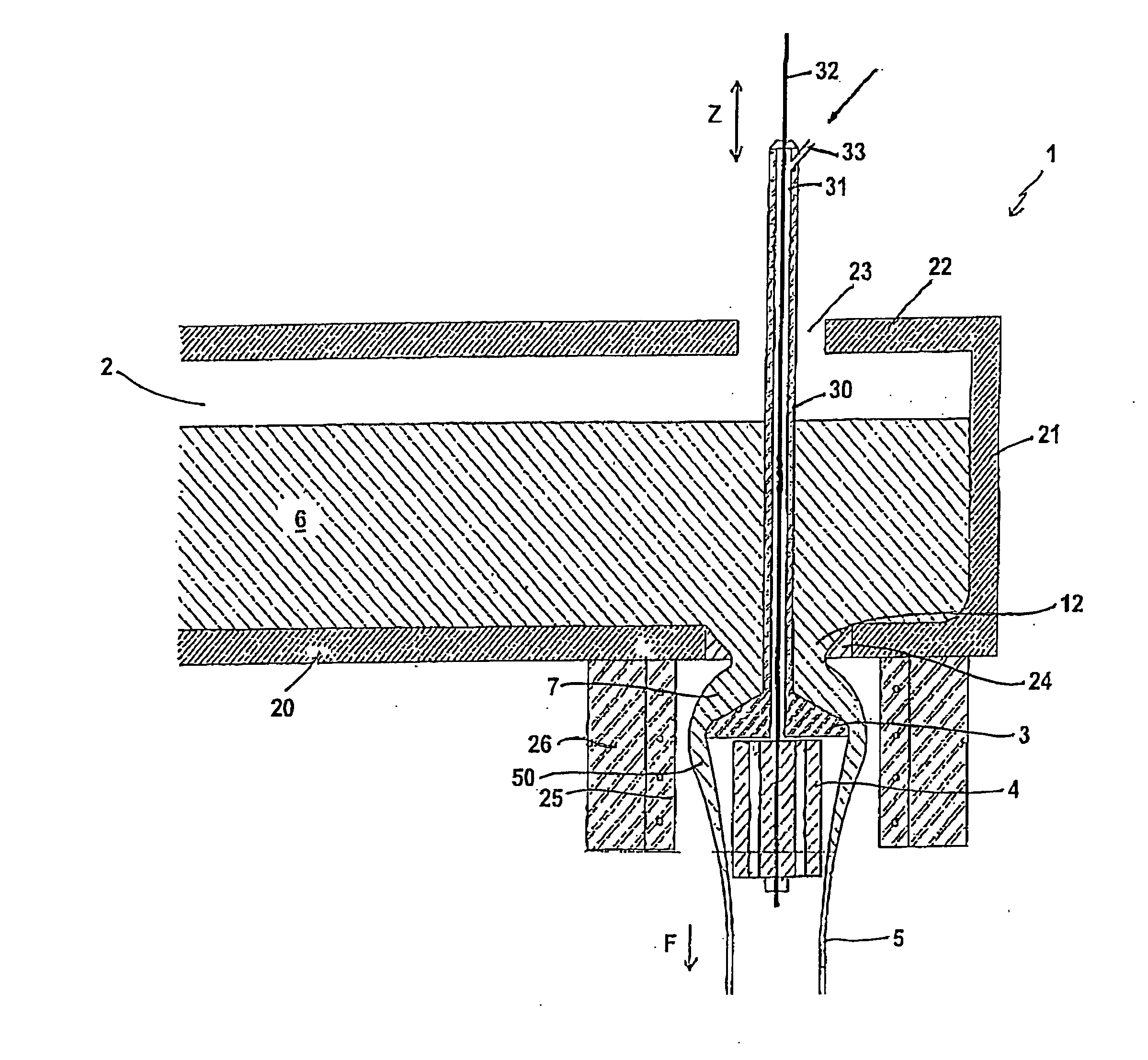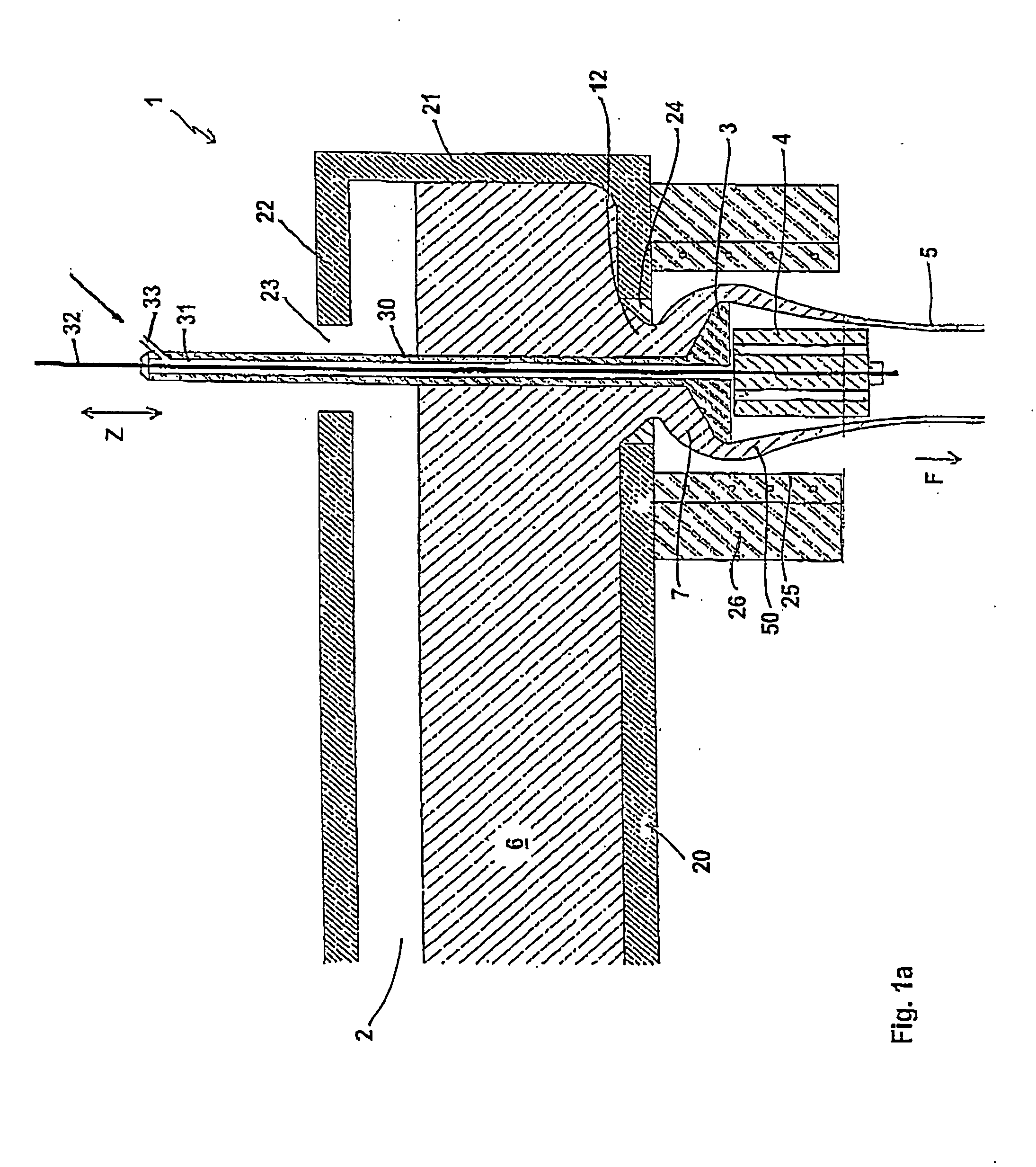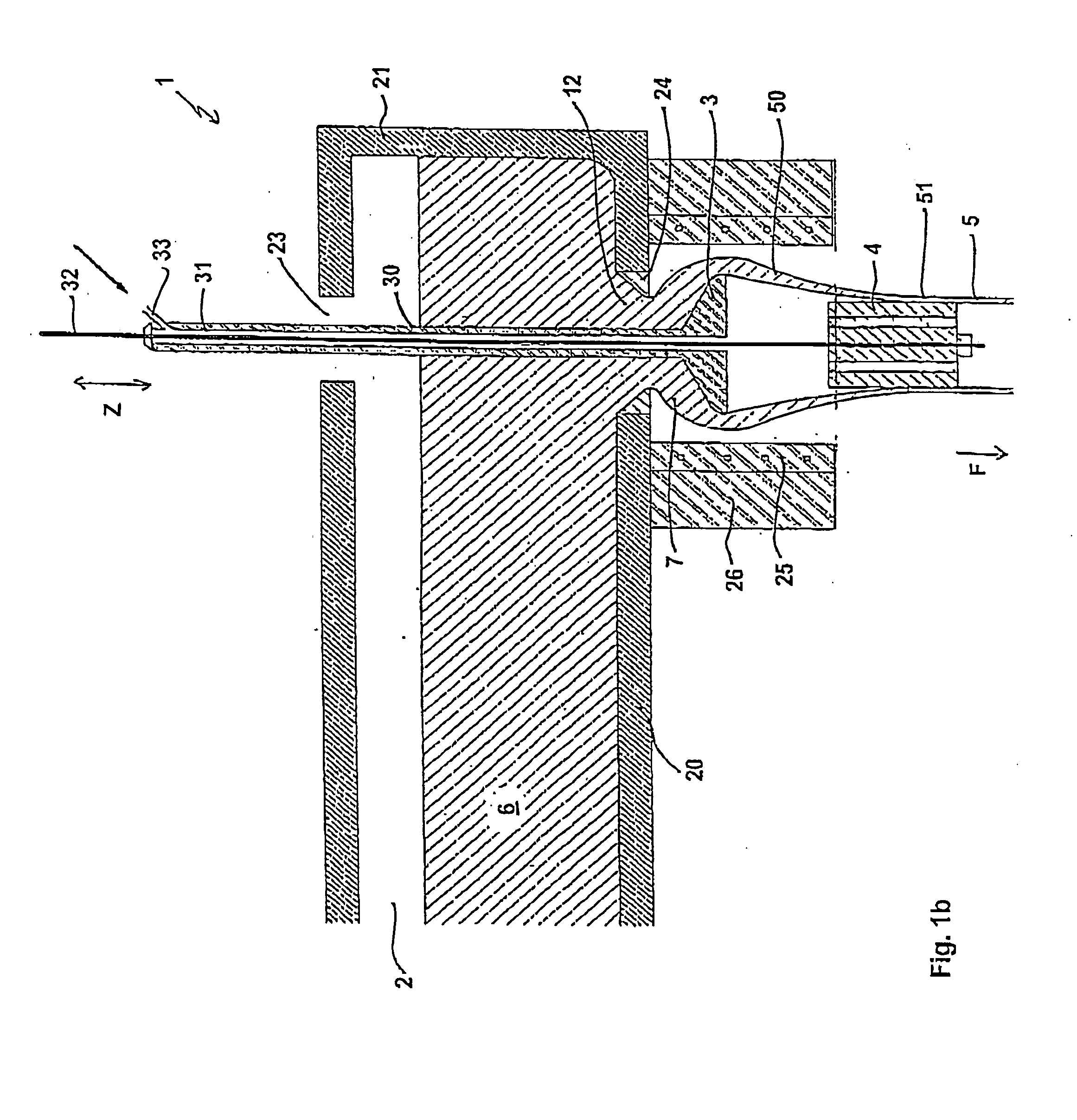Method and apparatus for continuously manufacturing calibrated round or profiled glass tubes
- Summary
- Abstract
- Description
- Claims
- Application Information
AI Technical Summary
Benefits of technology
Problems solved by technology
Method used
Image
Examples
exemplary embodiment 1
[0066] It can be seen from the following exemplary embodiment that glass tubes having more precise profiles and smaller tolerances can be manufactured using the drawing method according to the invention.
[0067] For this purpose, a glass tube having otherwise the same parameters was drawn using the conventional down-draw method without using the profile forming body according to the invention positioned downstream of a drawing needle (free forming). The conditions were selected so that a glass tube having an inside diameter of 59.25 mm should be freely formed. Measurements of the inside diameter showed that this fluctuated along the length of the glass tube between a minimum value of about 58.70 mm up to a maximum value of about 59.85 mm, corresponding to an average fluctuation of 1.15 mm in total.
[0068] For comparison, under otherwise the same conditions a calibrated glass tube was manufactured using the drawing method according to the invention i.e., with a profile forming body po...
exemplary embodiment 2
[0071] Using a method according to the present invention, calibrated glass tubes with a total length of 54 m having an outer diameter of 80 mm, a wall thickness of 2.5 mm and an inner diameter of 75 mm were drawn. More specifically, a plurality of single glass tubes with a respective length of 1.5 m was drawn. The outer diameter was measured continuously over the total tube length. In order to avoid slicing of the glass tubes, the inner diameter was measured only at the respective tube ends, as a fluctuation of the inner diameter directly results in a corresponding fluctuation of the outer diameter of the glass tube under the assumption of a constant wall thickness. The results of the measurement of the maximum and minimum outer diameter of the glass tube are summarized in FIG. 6, wherein the single glass tubes are numerated.
[0072] Referring to FIG. 6, the maximum outer diameter varied between 80.6 mm and about 80.48 mm. Furthermore, the minimum outer diameter varied between 80.55 ...
PUM
| Property | Measurement | Unit |
|---|---|---|
| Fraction | aaaaa | aaaaa |
| Fraction | aaaaa | aaaaa |
| Fraction | aaaaa | aaaaa |
Abstract
Description
Claims
Application Information
 Login to View More
Login to View More - R&D
- Intellectual Property
- Life Sciences
- Materials
- Tech Scout
- Unparalleled Data Quality
- Higher Quality Content
- 60% Fewer Hallucinations
Browse by: Latest US Patents, China's latest patents, Technical Efficacy Thesaurus, Application Domain, Technology Topic, Popular Technical Reports.
© 2025 PatSnap. All rights reserved.Legal|Privacy policy|Modern Slavery Act Transparency Statement|Sitemap|About US| Contact US: help@patsnap.com



